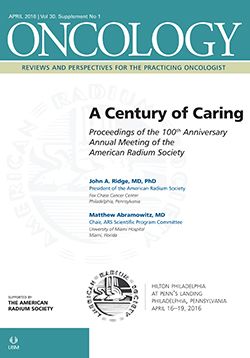(P025) Outcomes of Re-irradiation to Epithelial Head and Neck Cancers With Intensity-Modulated Radiation Therapy
Re-irradiation to the head and neck with IMRT can allow for high radiation doses to be administered with limited severe toxicity and improved local control.
Nathan J. Goldman, MD, Christopher Nelson, BS, Wayne Kang, BS, Michael Lacombe, MD, Seung S. Hahn, MD; SUNY Upstate Medical University
BACKGROUND: Recurrent head and neck cancers are treated with a combination approach of surgery, chemotherapy, and radiation. Re-irradiation has been limited due to toxicity to normal tissue structures. Intensity-modulated radiation therapy (IMRT) is better able to spare normal tissues, therefore re- irradiation can be given to dose levels that can control gross disease. We examined patients previously treated with radiation to the head and neck who had a second course of radiation using IMRT and evaluated survival, local control, and toxicity outcomes.
METHODS: We identified 32 patients (7 new primary) treated with curative intent at our institution with re-irradiation to epithelial head and neck cancers using IMRT between 2004 and 2014. We assessed long-term toxicity, as well as survival and local control (LC), in these patients and assessed for impact of surgery, chemotherapy, radiation dose, time between treatment, and second primary vs recurrence.
RESULTS: Median overall survival was 19 months, with median local control of 7.5 months. Grade ≥ 3 late toxicity was observed in 30% of patients, with one death attributed to treatment toxicity (aspiration pneumonia). Patients with new primary disease had improved overall survival, progression-free survival, and LC compared with those who had a recurrence. New primary patients also had a higher median re-irradiation dose of 6,400 cGy as compared with 5,550 cGy. LC was improved in patients treated with a dose of radiation > 5,550 cGy (median: 13 mo vs 8 mo).
CONCLUSION: Re-irradiation to the head and neck with IMRT can allow for high radiation doses to be administered with limited severe toxicity and improved LC. Patients with second primary malignancies may benefit from different biology with less radioresistance compared with recurrent cancers, as well as the ability to withstand more aggressive treatment.
Proceedings of the 98th Annual Meeting of the American Radium Society - americanradiumsociety.org
